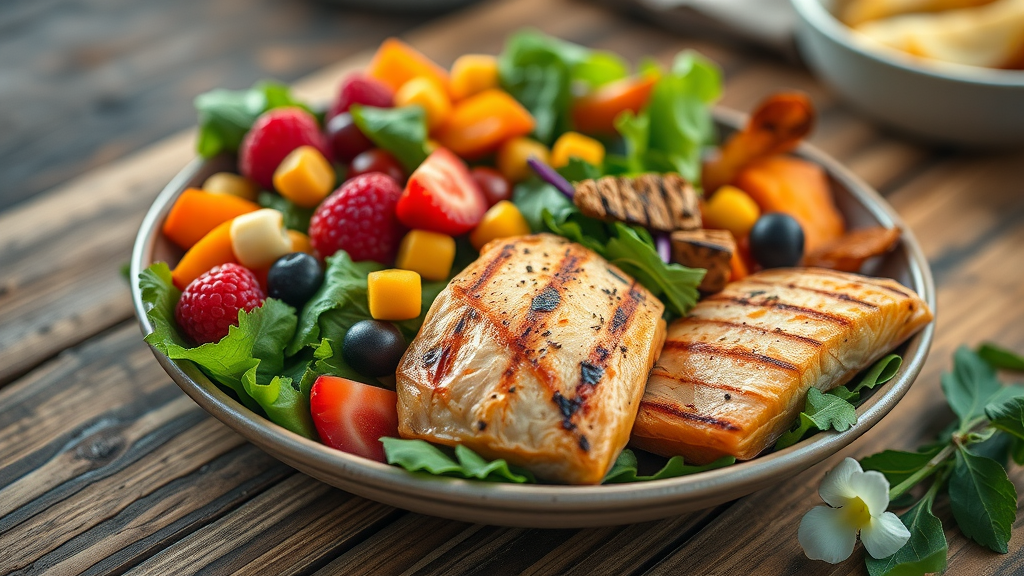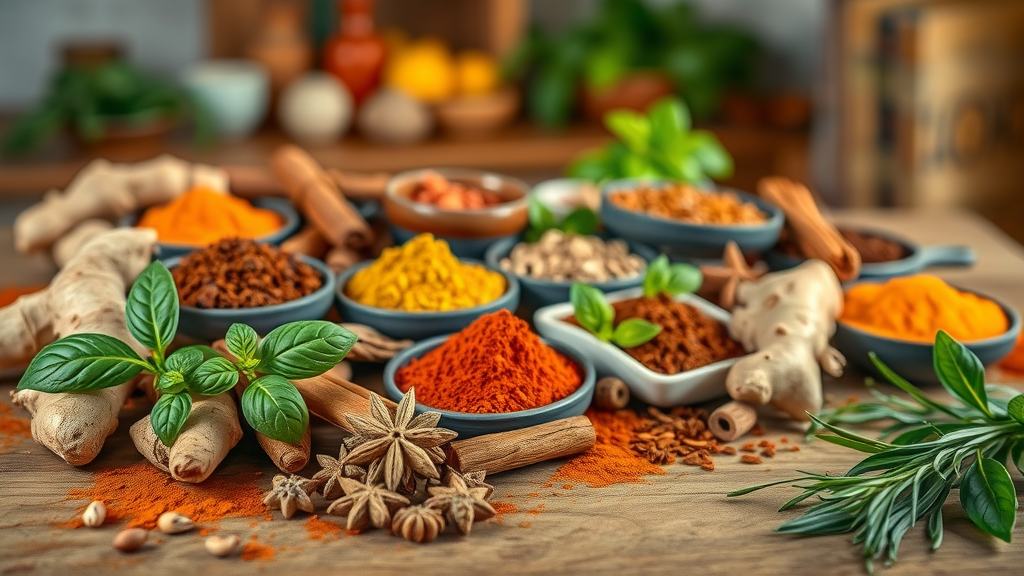Chronic pain can feel like an unending battle, leaving you exhausted and frustrated. But what if the key to relief lies in your kitchen? The Anti-Inflammatory Diet is more than just a trendy eating plan; it’s a powerful tool that can help reduce inflammation, alleviate pain, and improve your overall well-being. In this article, we’ll explore how embracing this diet can transform your life, offering practical tips and delicious recipes to get you started. Say goodbye to discomfort and hello to a healthier, happier you!
Opening Hook: The Connection Between Chronic Pain and Diet
Understanding Chronic Pain and Inflammation
Chronic pain is often linked to inflammation, a natural response of the body to injury or infection. However, when inflammation becomes chronic, it can lead to various health issues, including arthritis, heart disease, and even cancer. The foods we consume play a significant role in either exacerbating or alleviating this inflammation. By understanding the connection between diet and chronic pain, we can make informed choices that promote healing and comfort.
How the Anti-Inflammatory Diet Can Help
The Anti-Inflammatory Diet focuses on incorporating foods that fight inflammation while avoiding those that trigger it. This diet emphasizes whole, nutrient-dense foods such as fruits, vegetables, whole grains, and healthy fats. By adopting this eating style, individuals can experience reduced pain levels, improved energy, and enhanced overall health. Research suggests that a well-balanced diet can significantly impact inflammation markers in the body, leading to a better quality of life.
What You'll Learn
- The principles of the Anti-Inflammatory Diet
- Key foods to include and avoid
- Practical tips for meal planning
- Delicious recipes to try
Key Components of the Anti-Inflammatory Diet
Foods to Embrace
Incorporating a variety of foods rich in antioxidants, vitamins, and minerals is essential for fighting inflammation. Key components of the Anti-Inflammatory Diet include:
- Fruits and Vegetables: Berries, leafy greens, and cruciferous vegetables are packed with antioxidants.
- Healthy Fats: Olive oil, avocados, and nuts provide essential fatty acids that combat inflammation.
- Whole Grains: Brown rice, quinoa, and oats are excellent sources of fiber and nutrients.
- Fatty Fish: Salmon, mackerel, and sardines are rich in omega-3 fatty acids, known for their anti-inflammatory properties.
Foods to Avoid
To maximize the benefits of the Anti-Inflammatory Diet, it’s crucial to limit or avoid certain foods that can trigger inflammation:
- Processed Foods: Items high in trans fats, refined sugars, and additives can exacerbate inflammation.
- Red and Processed Meats: Hot dogs, bacon, and other processed meats are linked to increased inflammation.
- Refined Carbohydrates: White bread, pastries, and sugary cereals can spike blood sugar levels and promote inflammation.
- Excessive Alcohol: High alcohol consumption can lead to inflammation and other health issues.
Practical Tips for Implementing the Anti-Inflammatory Diet
Meal Planning Strategies
Effective meal planning is key to successfully adopting the Anti-Inflammatory Diet. Here are some strategies to consider:
- Plan your meals for the week, focusing on incorporating a variety of anti-inflammatory foods.
- Batch cook and prepare meals in advance to save time and ensure you have healthy options readily available.
- Experiment with new recipes to keep your meals exciting and flavorful.
Shopping Tips for Anti-Inflammatory Foods
When shopping for anti-inflammatory foods, consider the following tips:
- Shop the perimeter of the grocery store where fresh produce, meats, and dairy are typically located.
- Read food labels carefully to avoid hidden sugars and unhealthy fats.
- Choose organic produce when possible to reduce exposure to pesticides and chemicals.
Delicious Anti-Inflammatory Recipes
Breakfast Ideas
Start your day with these nutritious breakfast options:
- Berry Smoothie: Blend spinach, mixed berries, and almond milk for a refreshing start.
- Overnight Oats: Combine oats, chia seeds, and almond butter for a filling breakfast.
Lunch and Dinner Recipes
For lunch and dinner, try these wholesome recipes:
- Quinoa Salad: Mix cooked quinoa with cherry tomatoes, cucumber, and a lemon-olive oil dressing.
- Grilled Salmon: Serve with steamed broccoli and sweet potatoes for a balanced meal.
Snacks and Desserts
Healthy snacks and desserts can also be part of the Anti-Inflammatory Diet:
- Hummus and Veggies: Enjoy a variety of colorful vegetables with hummus for a nutritious snack.
- Dark Chocolate: Opt for dark chocolate with at least 70% cocoa for a sweet treat that’s also anti-inflammatory.
People Also Ask
What is the best diet to reduce inflammation?
The best diet to reduce inflammation is one that emphasizes whole, unprocessed foods, including plenty of fruits, vegetables, whole grains, and healthy fats.
What is the #1 most anti-inflammatory food?
Fatty fish, such as salmon, is often considered the most anti-inflammatory food due to its high omega-3 fatty acid content.
What is the fastest way to flush inflammation?
Staying hydrated, consuming anti-inflammatory foods, and avoiding processed foods can help flush inflammation from the body quickly.
Can I eat eggs on an anti-inflammatory diet?
Yes, eggs can be included in an anti-inflammatory diet as they are a good source of protein and nutrients.
Key Takeaways
Adopting the Anti-Inflammatory Diet can significantly improve your health and reduce chronic pain. Key points to remember include:
- Focus on whole, nutrient-dense foods.
- Avoid processed and inflammatory foods.
- Incorporate a variety of fruits, vegetables, and healthy fats into your meals.
Conclusion
In conclusion, the Anti-Inflammatory Diet offers a holistic approach to managing chronic pain and inflammation. By making conscious food choices, you can enhance your well-being and enjoy a healthier lifestyle. Start your journey today by incorporating these principles into your daily routine, and experience the transformative effects of this powerful diet.
FAQs
How long does it take for the Anti-Inflammatory Diet to work?
Many individuals report feeling improvements in their symptoms within a few weeks of adopting the Anti-Inflammatory Diet.
Can I combine the Anti-Inflammatory Diet with other diets?
Yes, the Anti-Inflammatory Diet can be combined with other dietary approaches, such as the Mediterranean or DASH diets, for added benefits.
Video Section
Watch: The Benefits of the Anti-Inflammatory Diet
Check out this informative video that explores the numerous benefits of the Anti-Inflammatory Diet and how it can improve your health.





This HTML document provides a comprehensive overview of the Anti-Inflammatory Diet, structured according to the provided outline. It includes engaging content, practical tips, and relevant images to enhance the reader’s experience.
 Add Row
Add Row  Add
Add 



Write A Comment